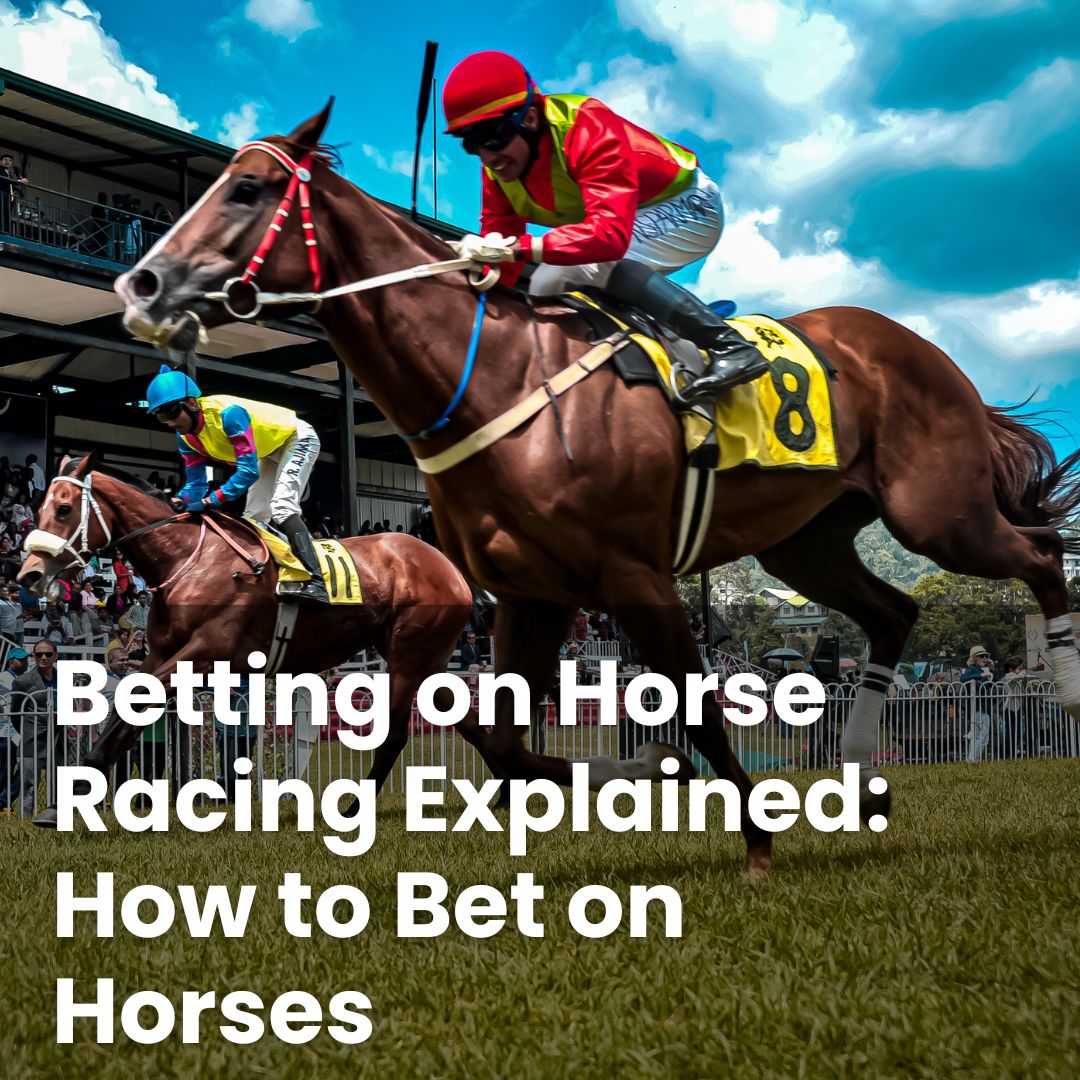Ever wondered what it actually means to bet on a horse race? You might have seen people talking about odds, placing bets at the races or online, or cheering on their favourites, but not knowing where to start. It could seem puzzling at first if you have never tried it before.
Whether you are curious about how it all works or simply want to understand what you are seeing on TV or at the track, this guide explains the basics without any complicated jargon. Read on to learn more.
What Does Betting on Horses Involve?
Betting on horses is about forming a view on a race and staking money on an outcome. You can choose a horse to win, or to finish in a certain place, and your potential return is based on the odds when your potential bet is placed.
Beside each horse you will see odds, shown as fractions like 5/1 or decimals such as 6.00. These show what you stand to potentially win relative to your stake if your prediction proves correct.
Bets can be made at high-street shops, at the racecourse, or with online bookmakers. Online, you usually create an account and can browse the day’s meetings and markets in one place.
Some sites offer promotions or features for certain races, but the details vary. It might be a good idea to check the terms so you know how a bet type works and what would count as a winning result.
If you do decide to try your hand at horse racing, remember to do so responsibly and within your means; never wager more than you can afford to lose.
Types of Horse Racing Bets
There are a few main bet types you may see again and again, from straightforward options to more involved combinations. Knowing the difference could help you pick something that matches how confident you feel about a race.
Win, Place, and Each-Way Bets
A win bet is the simplest. You are backing your horse to finish first. If it does, you are paid at the odds taken.
A place bet is for a horse to finish in the places. How many places count depends on the number of runners and the race type. In some races this can include third or fourth.
An each-way bet combines both. Half your stake goes on the win and half on the place. A £2 each-way bet costs £4 in total. If the horse wins, both parts are settled. If it finishes in the places without winning, the place part can still return something, usually at a fraction of the win odds.
Forecast and Tricast Bets
A forecast involves naming the first two horses home. A straight forecast requires the exact order. If you want the same two in any order, that is a reverse forecast and it costs more because it covers both possibilities.
A tricast is similar but for the first three home. A straight tricast is the exact order, while a combination tricast covers all finishing orders for your three picks. These are tougher to get right, which is why the potential return can be higher.
Speciality and Exotic Bets
Beyond the basics, some bets cover multiple races or a wider set of outcomes. A popular pool option is the placepot, where you aim to pick a placed horse in each of the first six races on a card. There are also markets such as a jockey or trainer to ride or send out several winners in a day, or bookmaker offers that pay extra places on certain big-field handicaps. The set-up differs between firms, so it could be worth checking the rules before you consider placing a stake.
Discover The Best Online Casinos
Browse our list of top-recommended casino sites, read reviews from real players & be the first to get access to the latest casino bonuses
How Do You Read Horse Racing Odds?
Horse racing odds show both the potential return and the implied chance of a result. In the UK, fractional odds are common. At 4/1, you would win £4 for every £1 staked, plus your £1 back, if your horse wins. A £2 bet at 4/1 would therefore return £10 in total. At 7/2, you would win £7 for every £2 staked.
Decimal odds include your stake in the figure. At 5.00, a winning £1 bet returns £5 in total, which is £4 profit plus your £1 stake. Many online sites let you switch between formats so you can view prices in the way you prefer.
Bookmakers must display odds clearly, but layouts vary. If you are moving between the high street, the racecourse and online, it might be a good idea to take a moment to check how the market is shown so you know what you are selecting.
What Factors Should You Look At Before Placing a Bet?
Recent form could be a good starting place. Race cards list finishing positions and often note headgear, days since last run, or class changes. A string of solid runs can be reassuring, but consider the context, such as the quality of opposition.
Jockeys and trainers matter too. Some pairings do well together, and certain yards tend to target particular tracks or race types. The going, or ground condition, is also important. Horses can show a preference for soft, good or firm ground, and rain or sun on the day can change how a race plays out.
Distance and course configuration influence performance. A horse that stays strongly may be better over further, while others have the pace for shorter trips. Draw position can affect tactics at some tracks, especially around tight bends or on sprints. In handicaps, look at the weight carried and whether a horse is dropping to a mark where it has run well before.
How to Place a Bet on Horse Racing Online
1. Create an account
- Sign up with a UK Gambling Commission (UKGC)-licensed bookmaker.
- Verify your age and identity as required.
2. Add money to your account
- Use one of the site’s payment options, such as a debit card or bank transfer.
3. Find a race
- Check the list of upcoming meetings by date and time.
- Each race shows the horses and their odds.
4. Make your selection
- Click on the odds for the horse you want to back.
- This adds it to your bet slip.
5. Place your bet
- On the bet slip, choose your bet type (e.g. win or each-way).
- Enter how much you want to bet (stake).
- Review your potential return, then confirm the bet.
6. Track your bet
- Your bet appears in your account history.
- You can watch how it goes and see options like Cash Out or Extra Places if the site offers them.
- These features are usually marked on the race page or bet slip.
How Does Betting at the Racecourse Work?
At the racecourse, rows of bookmaker stands display the runners and their prices. You decide what you want to back, tell the bookmaker your selection and stake, and receive a printed betting slip. It might be wise to keep this safe, as it is needed to collect any winnings.
Prices can move quickly in the minutes before the off, reflecting money coming into the market, so keep an eye on the boards. Many racecourses also have the Tote, which is pool betting where stakes go into a common pot and are shared among winning tickets after deductions. The Tote often offers markets like win, place and placepot, with dividends declared shortly after the result.
Most on-course bets are still settled in cash, though some stands accept cards. If your bet wins, return to the same bookmaker to be paid. If it loses, the stake is not returned. Facilities and payment options vary by venue, and racecourse staff can point you to where you need to go if anything is unclear.
Common Mistakes to Avoid When Betting on Horses
Many new bettors may overlook research. Even a brief look at a horse’s recent form, the jockey’s record, or the race conditions could provide helpful context. This information is generally available and could support more informed decision-making.
Placing bets solely based on tips or instinct can also lead to unexpected results. While tips may provide ideas, they do not replace an understanding of the race conditions and the participants.
Finally, assuming that all online bookmakers operate in the same way may be misleading. Comparing a few operators licensed by the UKGC could help ensure that the site follows required safety and fairness standards.





